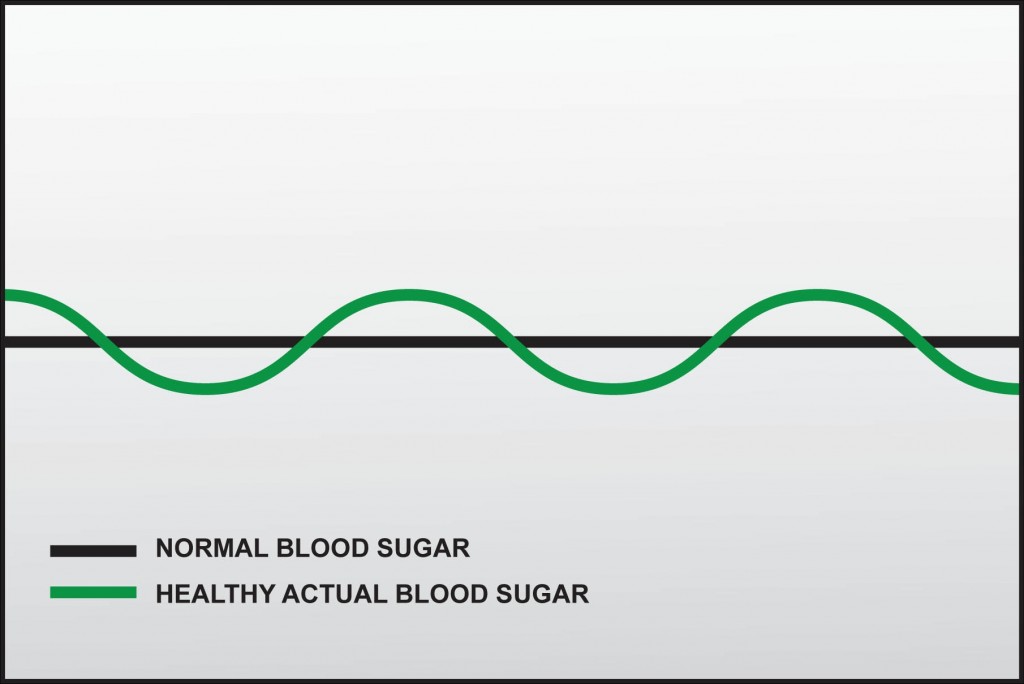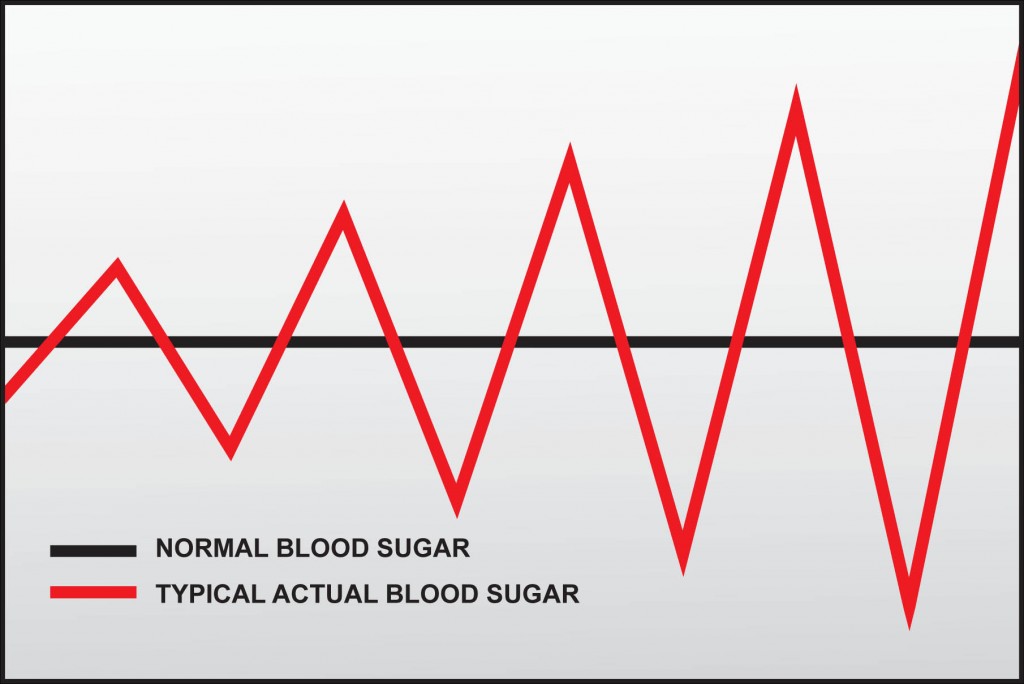Welcome to Lesson 3 of Real Food Family University! In case you missed the first few lessons, click here:
Real Food Family University: Introduction
Real Food Family University Lesson 1: 5 Foods to ADD to Your Diet TODAY
Real Food Family University Lesson 2: Get Rid of the Worst Offenders
Today I’m going to discuss eating a little more, and help you understand how to put together a properly balanced meal that will balance your blood sugar, hormones, and offer a good balance of nutrients.
A “Whole Foods” Diet is Good, But Not Enough
We’ve already established foods to add and foods to take away that will help you eat a truly “whole food” diet: eating real, organically raised food instead of chemical-laden, processed or factory produced “food products.” This recommendation might be misunderstood to where a person may think eating only raw carrots (or plants) is considered a “whole food” diet, and this person will most likely crunch their way into diabetes… “eh…what’s up doc?”
Let’s begin by understanding macronutrients- the kinds of calories we eat, and in what proportions. First you must know that all foods are basically considered to be one of three macro- or big- nutrients: a protein, a fat, or a carbohydrate. Many whole foods have two or all three of these macronutrients, but can be categorized as predominately one. The ratio of macronutrients that a person consumes mainly affects their blood sugar levels, which immediately influences your energy and metabolism. Our earliest ancestors ate a diet of 80% fat and/or protein, and 20% carbohydrate. Today we have flipped that figure, although our bodies are almost exactly the same, which I believe is a major factor in why we suffer from degenerative diseases like diabetes, heart disease, and even cancer. Learning to properly balancing macronutrients with every meal will not only help protect from degenerative diseases, but keep us at an appropriate weight, offer optimum energy, regulate sleeping cycles, give mental clarity, and much more. Macronutrient balance is an important step in achieving optimal physical health and wellness.
What is Macronutrient “Imbalance”?
Think about this…a typical family goes out to eat at The Olive Garden. They order breadsticks (carbohydrate), salads (carbohydrate), and a pasta dish that may or may not contain a little lean meat (mostly carbohydrate with a little protein). Add dessert and you have just consumed a excessive 98%-carbohydrate meal. Now, think about this…you’re living in the wild and you need to feed your family. Do you spend your energy hiking through the wilderness looking for edible plants to fulfill your diet or do you fashion a spear and hunt for animal meat? One viewing of television shows like “Wild Alaska” or “Man Vs. Wild” and you know what the proper choice is (#2).
The physiological truth to the story is that we need fat and protein, mostly from animal sources, to thrive. Our bodies are designed to survive off of nutrient-dense animal fat and protein- even in small amounts. (*To understand why I recommend an omnivorous diet over a vegetarian or vegan diet, click here.) Carbohydrates provide immediate energy, but the energy doesn’t last very long, and you will be continuously reaching for more food if you consume carbohydrates alone. I often describe eating like building a fire. You use quick-burning pieces of kindling (carbs) to get the fire started, then you add a nice log (fat) to keep the fire burning for a long time. The log is the sustainable choice here, using fewer resources to keep the fire thriving. The same goes for the body. Carbs and fat both provide energy, but the fat calories, though more dense with calories, offer the longest lasting energy.
You may be wondering where protein fits in. After all, most nutritionally-minded people emphasize a need for protein but don’t understand that fat is equally- or even more- important. Protein does not necessarily provide immediate energy when compared to carbs or fats, but is essential for the body to survive. A diet of mostly protein with little or no fat would result in the body going into “survival mode” or even protein toxicity. You may lose weight this way, but your energy levels will plummet and you will completely mess up your hormones. You will also most likely yo-yo back to having excess weight. Protein and fat should be eaten in equal amounts and always together.
Macronutrient Balance and Blood Sugar Regulation
Understanding good macronutrient balance is essential to understanding blood sugar regulation. I think these graphs will help you understand this concept a little better:
Normal blood sugar: natural waves of blood sugar regulation as the body tries to keep the levels close to “normal” during and in between meals. Different blood sugar regulating hormones are produced as the blood sugar rises and falls.
Unfortunately most people do not experience this nice ebb and flow. We eat high carbohydrate meals that blast our blood sugar and cause an overload of regulating hormone (insulin) to be produced. The insulin dramatically drops the blood sugar and so the body reacts by craving more sugar and carbs and back up we go! This spiky seesaw effect continues throughout life, often developing into hypoglycemia and hyperglycemia. This picture represents what’s happening in this scenario:
**Images are generalizations are are NOT to be used for scientific or medical research purposes.
Eventually the body is so sick and tired of over-producing and recognizing the regulating hormones that it stops responding to them altogether, known as insulin-resistance and eventually Type 2 Diabetes. It is important to understand that the hormone producing organs (mainly pancreas, adrenals and liver) are continuing to produce the blood sugar hormones even though the body isn’t recognizing that those hormones are there. This is what is termed, “symptoms of deficiency in the presence of excess”- the hormones are being produced but the body’s cells are not receiving the message. This cycle completely wears out these organs, they stop producing hormones altogether and they eventually shut down, leading to very serious problems. This is, of course, a very simplified explanation of blood sugar, but I find it to be very helpful general explanation.
How Do I Actually Eat This Way?
The next step is to understand what to do with this information.
- How do I eat so that I have good, lasting, sustainable energy without over eating?
- How do I eat to keep my blood sugar regulated and avoid degenerative disease?
Whenever you eat a meal, eat it on a plate. Look at it. Don’t count calories, don’t count grams, don’t count anything. Simply determine if there is enough food to fill you up, but not so much that you’ll feel too full. Then determine that about 30% of the plate is a healthy fat (organic animal foods, raw dairy like butter or cream, coconut oil, nuts- preferably soaked and dried), 30% protein (organic animal foods, soaked legumes), and 40% carbohydrate (organic vegetables or whole grains that have been soaked and/or sprouted.) This is a good ratio for most people, but many feel they should have more of a 40% fat, 40% protein, 20% carbohydrate ratio. There are very few people that qualify to have more than a 40% carbohydrate diet*. Eat three to four meals per day, not multiple small meals as frequently recommended by other nutrition professionals. Eat foods in this proportion en mass, not as a percentage of calories. In other words, I’m not talking about 30/30/40 percent of calories. Create a pie chart on your plate and determine 30/30/40 percent of the plate! This is very simple, but flies in the face of most mainstream nutrition advice because of the high amount of fat. Don’t forget, the “avoid fat” advice that has made our nation fatter and sicker, and the wallets of processed and “diet” food producers fatter. The evidence is continuously confirming that traditional fats- even saturated fat- are not to blame for disease, but sugar is!
*Nutritional Therapists (NTP’s) like me are trained to determine an individual’s Metabolic Type or bio-individuality in regard to proportioning macronutrients. Most of the population requires this 30/30/40 balance. Those with blood sugar disorders or metabolic disease should reduce their carbohydrate intake to 20% or less. Very few people measured with Metabolic Typing truly need more than 40% carbohydrates in their diet.

I’ve already created Macro-Nutrient Balanced Meal Plans For You!
If you need help eating meals with the proper Macro-Nutrient balance, I highly suggest my Real Food Weekly Meal Plans library. This is an online library of over 75 whole food weekly meal plans with complete shopping lists and easy recipes. A one-time membership fee to Real Food Weekly gives you unlimited access to the entire library of meal plans, including any future meal plans to be added to the library. *I also donate %50 of all memberships to my favorite charity.






